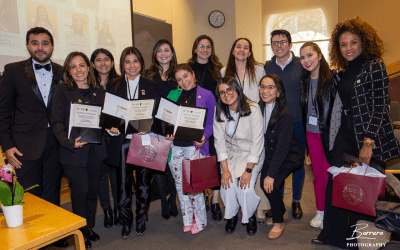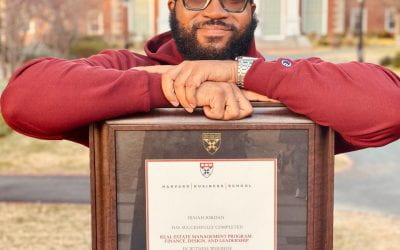A Review of Aaron Copland in Latin America: Music and Cultural Politics

Aaron Copland in Latin America: Music and Cultural Politics by Carol A. Hess (University of Illinois Press, 2023, 317 pages)
By the time he began his tours, Copland was already an established composer, characterized by an “accessible” approach to composition in which he incorporated folk and jazz elements while maintaining a modern classical framework. In the 1940s, many art music composers tended to reject populism, embracing “intellectual” compositional conventions that grew increasingly structural throughout World War II. Copland, although having also dabbled in highly systematized methods, had gained widespread acclaim by drawing inspiration from folk tunes in El Salón México (1936). Compositions like Fanfare for the Common Man (1942) and Appalachian Spring (1944) gained him a reputation as a purveyor of U.S. Americana. His impassioned views regarding the trajectory of art music during the 20th century were best captured through a notable series of lectures (1951–1952) given while he served as the Charles Eliot Norton Professor at Harvard University. The lectures were published as a book titled Music and Imagination (1962).
Hess shapes a powerful narrative as she navigates the political, cultural and aesthetic landscapes that defined Copland’s ventures abroad. A founding member of the American Musicological Society’s Ibero-American Music Study Group, Hess has played a significant role in gaining validation for scholarship about Latin American music, and she generously shapes the book as building on the work of a community of scholars. In contrast to the predominantly male focus of the book—with the exception of the famed teacher Nadia Boulanger—Hess uses the “Acknowledgments” section to credit the women scholars of Ibero-American music for the recent renaissance of the subfield, including Jacqueline Ávila, Ana Alonso-Minutti and Cristina Magaldi. Hess also foregrounds Latin American composers, their compositions and their countries’ traditional musics. Additionally, in her “Editorial Note,” she challenges the linguistic status quo, critiquing the dominance of English in academia and the conflation of “America” with the “United States.”
The 12-chapter book is structured in three parts, beginning before Copland’s involvement in Latin American policy and extending through the Cold War. In “Part I: A Citizen Diplomat Prepares,” Hess sets the stage by framing the political environment within the context of a shifting U.S. presidential administration. Franklin D. Roosevelt (FDR), president from 1933 to 1945, halted the militaristic approach to Latin American diplomacy carried out by his predecessors and introduced a more conciliatory policy, which Hess describes as a display of soft power. The FDR administration’s foreign policy in Latin America sought to construct a Pan-American understanding of culture and identity that starkly contrasted with the ethical values of the Axis powers. This initiative came to be known as the Good Neighbor Policy. The Office of Inter-American Affairs (OIAA) executed these efforts, and, as part of the OIAA’s Music Committee, Copland was tasked with traveling to various countries to evangelize the Good Neighbor Policy in the field of art music.
The legacies of racism, xenophobia and antisemitism in the art-music industry play a prominent role in the book, and Hess rightfully acknowledges the complicity of government officials, composers, critics and even Copland himself. Music critics shaped artists’ public image during this time and often judged Copland’s work based on his personal identity. While critics accused him of catering to public appeal by shifting from an abstract modernist style to a more accessible and tuneful idiom, Hess suggests that persistent labeling of his music as “oriental” and “eclectic” targeted his Jewish background. Moreover, she calls attention to the biases of acclaimed composers and critics, including Henry Cowell, Paul Rosenfeld and Carl Ruggles, providing readers with a cautionary reminder to think critically about the often-presumed faultlessness of canonical figures.
“Part II: Copland, Latin America, and WWII” offers an account of Copland’s government-sponsored tour in 1941. Hess leads readers on a vivid journey through Copland’s travels to Argentina, Brazil, Chile, Mexico, Colombia, Peru, Ecuador, Cuba and Uruguay, offering her perspective on his encounters with local musicians, composers and cultural figures. Copland built his notoriety in Latin America through diverse means: radio broadcasts, such as his interview with the notable academic Leopoldo Hurtado in Argentina; performances of his music, including Billy the Kid in Peru; published critiques like “Composers of South America,” in Modern Music (1942), among others. Copland’s diaries provide the contours of his travels and lay out the progression of his strategies in acquiring the respect and esteem of Latin American composers. As part of his OIAA duties, Copland evaluated the music of Latin American composers and determined who might be invited to perform their music in the United States. Part II recounts the concerts, meetings and lectures that Copland attended. Copland formed long-lasting friendships with artists, including Carlos Chávez of Mexico, Alberto Ginastera of Argentina and Heitor Villa-Lobos of Brazil. Hess uses the interactions between Copland and his contemporaries as opportunities to delve deep into the life and music of an abundance of Latin American composers. All the while, his critiques and interviews portray Copland’s developing and, at times, conflicting approaches to composition and the construction of “authentic” American music.
Hess’ analysis of Copland’s radio appearances demonstrates one of the many ways she works to broaden the composer’s well-established biography. Such efforts are especially evident when examining Copland’s approaches to promoting a vernacular musical practice. While in Argentina, for example, the musicologist Leopoldo Hurtado interviewed Copland, in which Copland pleaded for the democratization of music and championed the development of the radio and phonograph. Both technologies, Copland suggested, exponentially broadened the dissemination of music. Still, the interviews also depict Copland’s struggle to align himself with a single musical methodology. When questioned about his music in the same interview, Copland articulated an artistic philosophy that fluctuated from a democratic populist to a representative of “serious music,” attuned to the biases of musical life in his own country.
In Part III, “Copland, Latin America, and the Cold War,” Copland returns to Latin America in 1947, then again in 1962 and 1963. This section examines the changing musical trends of the time, the growing dichotomy between nationalism and post-nationalism, and the impact of the Cold War on Copland’s artistic practices. Hess examines how McCarthy-era politicians intensified scrutiny on other government officials. This persecution targeted individuals whose views or behaviors were myopically deemed as “foreign” and resulted in expulsion from their government posts. Extending beyond Copland’s personal experiences, Hess draws out the broader implications of his cultural diplomacy efforts. By critically examining the reception of Copland’s music in Latin America, Hess considers its interpretation within the political and social contexts of each respective country. Her approach offers readers an understanding of the intersections between music and geopolitics, prompting them to reflect on the systemic issues that shaped Copland’s experiences and continue to influence the arts today.
Throughout the book, Hess scrutinizes U.S. racial dynamics, the erasure of diverse communities and the construction of a colonial imaginary through music. Aaron Copland in Latin America is a compelling history, offering valuable insights into the cultural landscape of the Americas amidst intense geopolitical tensions. Nevertheless, as with any scholarly work, certain limitations emerge.
While Hess adeptly examines the performative, fickle and constructed nature of race, she offers little consideration to similar issues surrounding gender and sexual identity. The exploration of Copland’s queerness is not as in-depth as that of his Jewishness, overlooking the complexity of his identity during a time when being gay could endanger his diplomatic position and professional reputation. While references to the Lavender Scare—the McCarthy-era persecution of LGBTQ individuals—are present, her engagement with the stigma of Copland’s queerness is often fleeting. Hess provides a necessary depiction of antisemitic rhetoric in music criticism, such as the labeling of Copland’s music as “oriental,” reflecting disparagements towards Jews. Although, as she indicates, claims of eclecticism may have had similar undertones, the term could have just as justifiably alluded to Copland’s sexual identity.
Hess adeptly captures Copland as a multi-faceted individual, acknowledging his strengths and faults. The book significantly contributes to a revisionist music scholarship that features historically obscured Latin American composers. Aaron Copland in Latin America challenges readers to broaden their perspectives and embrace a more inclusive interpretation of “American Music,” urging a critical reflection on societal prejudices and the complex interplay between art, geopolitics and identity.
Eloy F. Ramirez is a doctoral candidate in Historical Musicology at Harvard University. His current research delves into the intersection of phenomenology and sound within the counterculture movements of the 1960s in California’s Bay Area. Eloy’s scholarly pursuits extend to exploring themes such as cultural formation, settler colonialism, and vernacular philosophies of listening. As a Queer Xicano scholar, he is committed to amplifying the voices of composers and musicians from marginalized communities, disrupting dominant narratives, and expanding the boundaries of academic discourse.
More Student Views
Colombian Women Who Empower Dreams
English + Español
The verraquera of Colombian women knows no bounds. This was the message left with me by the March 30 symposium, “Empowering Dreams: 1st symposium in honor to Colombian women at Harvard.”
A Review of Born in Blood and Fire
The fourth edition of Born in Blood and Fire is a concise yet comprehensive account of the intriguing history of Latin America and will be followed this year by a fifth edition.
Resilience of the Human Spirit: Seizing Every Moment
In the heart of Chicago, where I grew up, amidst the towering shadows of adversity, the lingering shadows of generational demons and the aroma of temptation, the key to the gateway of resilience and determination was inherited. The streets of my childhood neighborhood became, for many, prisons of poverty, plundering, crime and poor opportunity.




